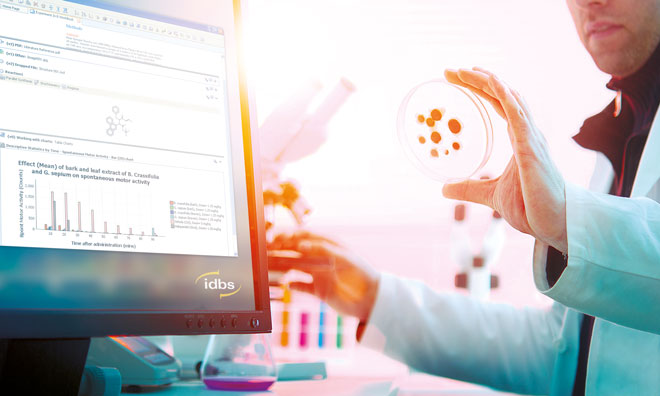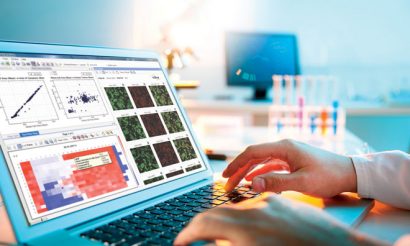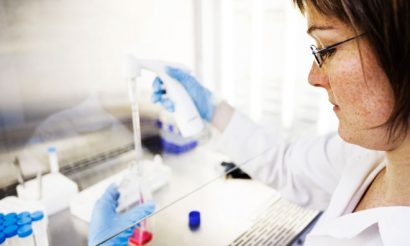Basel Life Science Week 2016: A “flurry of scientific intellect”
Posted: 10 October 2016 | J.T. Kaminski, Director of Technology Services EMEA at IDBS | No comments yet
Drug Target Review brought you all the latest research and development live from the conference. Now read IDBS’ J.T. Kaminski’s round up of the event…


The annual Basel Life Science Week (BLSW) in Switzerland was host to many organisations and individuals all interested in various sectors of science, ranging from precession medicine to synthetic biology, but a common theme was apparent throughout: innovation. Benchmark achievements and breakthroughs were defined by the various attendees in different terms, but how these advancements are executed was a recurring theme. It was clear from the workshops and exhibitions that accelerating science to keep up with the future pace of R&D was paramount to all.
The question that I see most, is how vendors like IDBS would help to manage R&D and transform lab operations; however, the question that needs to be answered first is what are you trying to do with your business and what sort of business models are relevant to you? There is a great desire to employ the latest technologies, in order to enhance collaboration with other scientists, but the question still remains: is technology the ‘silver bullet’?
I was lucky enough to be invited to speak, and my presentation focused appropriately on the ‘Lab of the Future’ (LotF) and the role that technology would play within it. To begin with, LotF is not about finding a use for new technology. It is about driving best practices in data management and transforming the laboratory along with the rapid pace of change, all while embracing innovation and the needs of the End User.
Today’s LotF themes have different connotations to different business units, making it impossible to place a universal definition of what that lab might look like. Every organisation will have different business drivers, including the existing technological infrastructure, processes employed and the scientists themselves, which should all be considered when determining your ‘Lab of the Future’ strategy.
We see three trending strategies common to all our customers in this regard: Automation, Collaboration and Ergonomics.


It is amazing to see the impact the consumer market, Internet of Things and advances in smart technology have in shaping our expectations around improving laboratory operations.
Automation
This usually leads to automation and looking at your processes, which automation by definition is meant to improve. One thing that strikes me, is how often people focus on automating existing practises – what I call ‘automating the past’ – rather than starting with a bottom-up review of current processes.
Start with questions; are current processes holding you back, are you leveraging informatics platforms to streamline processes? To properly apply the benefits of automation requires a deeper understanding of business processes, a review of the interaction between groups and a better picture of how the data flows and is reported in order to eliminate manual steps.
This practice of determining the ‘As-is’ and ‘To-be’ processes help to identify and rank opportunities for improvement as well as quantify project ROI is beneficial to all.
Collaboration
Collaboration and outsourcing is nothing new in the life sciences field, and underpins the business drivers listed above.
Operational and infrastructure costs can be reduced, but for some, it is about efficiency and increasing the speed at which new developments can be brought to market. Innovation as we all know is fostered through increased collaboration, but this usually comes with its own set of challenges.
How do you link data to data and people to people across the firewall?

You want to reap the benefits of automation without taking a step backwards, but outside the firewall means extra logistics and integration challenges – particularly the sharing of secure data in a timely manner, protection of IP and ensuring quality of data and integration of systems. That said, paper lab processes are not risk free.
Notebooks can be lost, stolen or even illegible. In order to maximise the benefits of collaboration, you need a balance of openness and protection that allows for conversations to happen in real time. It is important to find a solution that does this and introduces elements from the consumer world and social media norms such as comments, activity feeds and ways to have conversation in real time – and I do not mean email!
Ergonomics
Ergonomics in the lab environment is, again, a subject that has been widely discussed. While this has traditionally focused on the physical set up of the lab, the proliferation of mobile devices has had a significant impact on the work of scientists in the lab. But mobile devices in and of themselves are not necessarily the answer: the key is to give access to the interface best suited to the job.
Science is developed by scientists and technology can enable these discoveries from breakthrough to implementation. Ultimately, vendors need to provide the technology that allows customers to leverage their capabilities to manage their LotF strategy.
BLSW was a flurry of scientific intellect and I’m looking forward to seeing what developments, ideas and breakthroughs will feature next year.


Related organisations
Basel Life Science Week 2016



